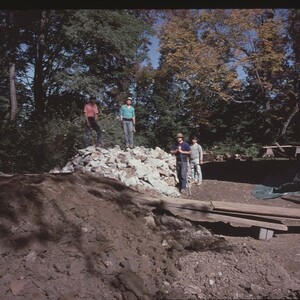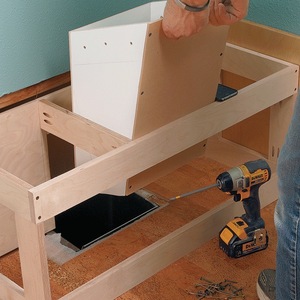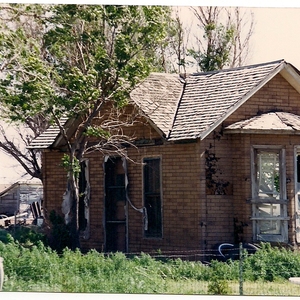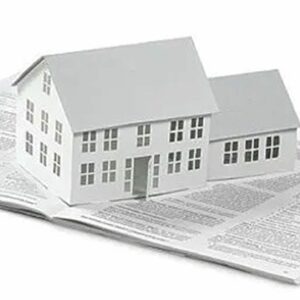Hot Grounds in Outlets …Cuases???
Go to a customers house because he says there is no ground onsome outlets in a room he is remodeling.
So I start to tak an outlet apart and as I unscrew the mouting screw with one hand I brush the other hand against the HW baseboard Heat…
ZZZZTTT!
Not a bad one just enough of a tingle to wake me up!!
so I check with a meter and get~50 volts betwenn ground and heatpipe and between ground and nuetral.
I want to take all outlets and swicthes on this circuit apart, replace with new, and check for over clamped wires and such.
There is also a Whole house fan on the same circuit and the floor finisherd wer running thier sanders of these outlets and they got a spark when thier edger bumped the heat pipe.
PITA part is that there is very little wire to work with in these boxes.
Any words of wisdom or caution will be Very Much Appreciated!!!
thanx in advance…
MrT, SamT, DanT,RonT,Ms.T… <!—-> <!—->
<!—->
Whatever… <!—->
<!—->
Welcome to Breaktime!!!<!—->
Where… <!—->
The free advice is worth every Penny!!! <!—->
:P<!—->
<!—->


















Replies
In a case like that I would start back at the main panel.
Is there a sub-panel? How old? How much Remuldeling has happend to the place?
Just got this in a EC&M email newletter.
" Nightmare Installations
Hands Off, Handyman
I was called to hang two ceiling fans in a newly renovated apartment because the apartment complex's handyman had received a shock from the wiring despite having turned the breaker off. The renovation had included changing the devices from ivory to white, and during the swapout the handyman had replaced a three-way switch with a single-pole. Not knowing where to attach the "hot" wire, he chose the only available screw -- the ground screw. The panel had no ground bond and a loose connection to the driven ground at the remote service entrance, so the isolated apartment ended up with an energized ground circuit. The only way to avoid shock would have been to de-energize the 100A main to the apartment. As a result, I had to completely rewire the complex from the service to the individual panels.
Don Jansen
Salisbury, Mass."
You can take an extension cord and plug it in near the panel and first verify it by measuring between the cord's receptacle ground and to the panel's ground. Then you can move that around the house and you have a know reference.
And verify that the heating pipe is "ground". It might not be either.
This doesn't make sense (or maybe I'm dense today) --"the handyman had replaced a three-way switch with a single-pole. ... The only way to avoid shock would have been to de-energize the 100A main to the apartment. I had to completely rewire the complex from the service to the individual panels."What about replacing the single-pole with a three-way switch? Or did the handyman mess with other wiring, too?
I am not real clear on this.But I think that this is what he is saying.In addition to connecting the hot wire to ground when replacing the 3-way switch their was a separate problem.The ground was not bonded at the apartment (sub) panel (as was correct). However, the ground wire back to the main disconnect was also defective.So instead of that hot to ground cauing a fault and tripping the breaker it make all of the grounds in the appartment hot.
> What about replacing the single-pole with a three-way switch?
.... Basically putting it back the right way. But the problems with that kind of error are first finding the one box containing the one switch in the whole building that's causing the problem, and making sure that that's the only error of that kind. Opening up lots of boxes while their grounds are hot is a dangerous and unpleasant prospect. The right thing to do is to shut it down and open all the boxes in the afflicted apartment, sort them out, and see if that solves the problem.
-- J.S.
You could also have a bad winding in the whole house fan motor.
tachi
tachi
Family in Tucson, business in the Far East, and heart in the Colorado mountains!
50 volts on ground indicates leakage and/or capacitive pickup. The "ground" is ungrounded.
First make sure the heating system is really grounded. Go put an extra clamp on a pipe and run it to a reliable electrical ground.
Then figure out why the outlets are ungrounded. I've seen cases where bozos cut the ground wires off flush with the cable jacket, so they wouldn't get in the way.
The most common cause of this sort of thing, assuming the voltages your reading are real and not 'ghost' voltages being read because your using a high impedance meter, is that there is something on the circuit that has a ground fault. It is bleeding current onto the ground.
As designed the ground, if it were intact, the ground would drain this and hold the ground circuit close to zero voltage. Ideally allowing enough current to flow to trip the breaker. Problem is likely that the ground circuit between the faulted site and the panel, possibly in the panel, is faulty. A loose or corroded connection or damaged ground path. This faulty ground path doesn't allow the neutral/ground connection at the panel to hold the ground circuit voltage down or allow enough current to flow to trip the breaker.
Check the ground bar, ground to neutral connections and circuit connections to the ground or ground/neutral bar for corrosion and tightness. Also work back tot he panel from the known problem until you localize the problem.
Do not tighten and remake connections willy nilly. If you do this you may never know the actual problem. You will not be sure if you solved the problem or if it is going to return. Take it a step at a time until you isolate it. Once isolated and understood then you solve it. This takes more time but it is both more instructive and satisfying.
hi
it sounds like your equipment grounding system needs some checking
if there is a ground fault making your heating sytem live and the breaker doesnt trip there is a serious safety issue here [thats what the equipemnt grounding system is all about so that when there is a fault the breaker will trip]
plug an extension cord into a KNOWN good outlet bring it to thr location
and test each conductor against it and the heater pipe if you get voltage to ground or neutral from the heat pipe there is a problem
also check the voltage at the outlet
also make sure that the neutral and ground both have continuity back to the panel this process should give you the infomation needed to know where to look next
good luck
berg